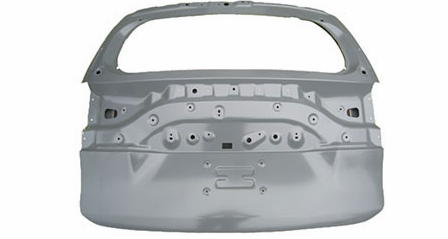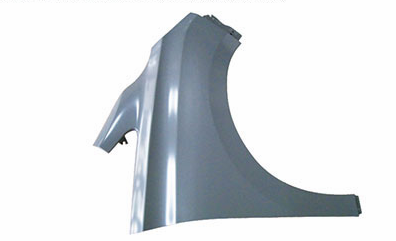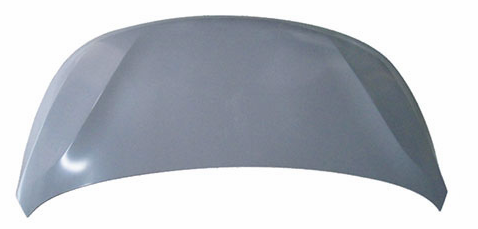The anti-collision beam of automotive parts is by no means the fundamental factor to ensure the safety of the personnel in the car, but it is meaningful to the safety. Its function is reflected in the low-speed collision, while in the high-speed accident, the anti-collision beam of automotive parts is powerless. The strength of the anti-collision beam is not worth mentioning compared with the body longitudinal beam and reinforcing ribs. What really saves your life at this time is to keep the cockpit as deformed as possible. Therefore, for the anti-collision beam, we should treat it rationally.

Anti-collision beam is a device used to alleviate the vibration of vehicles. Its two ends are connected with low-speed energy absorbing box with low yield strength, and then connected to the longitudinal beam of the vehicle body by bolts. The low-speed energy absorbing box can absorb the collision energy effectively when the vehicle collides at low speed, and minimize the damage of the impact force to the longitudinal beam of the vehicle body, thus playing its protective role on the vehicle. The anti-collision steel beam includes front and rear anti-collision beams and door anti-collision steel beams.
The significance of the front and rear anti-collision beams is that the vehicle bears the impact force at one time. An important concept in the passive safety of the vehicle body is that a point of force is exerted on the whole body. To put it bluntly, a certain position of the car body is hit, if only this part of the body is allowed to withstand, then the protection effect will be very poor. If the whole skeleton structure is subjected to the force at a certain point, the strength of the force at a point can be greatly reduced, especially the front and rear anti-collision steel beams play an obvious role here.

The two ends of the anti-collision beam are connected by a low-speed energy absorbing box with low yield strength, and then connected to the longitudinal beam of the car body by bolts. The low-speed energy absorbing box can absorb the collision energy effectively when the vehicle collides at low speed, and minimize the damage of the impact force to the longitudinal beam of the vehicle body, so as to reduce the maintenance cost, and the bolt connection method can be more convenient to replace the anti-collision beam.
In high-speed offset collision, the anti-collision beam can effectively transfer the impact force from the left side (or the right side) to the right side (or the left side) of the body, so that the whole body can absorb the collision energy as far as possible. In the case of low-speed collision (generally less than 15 km/h), the anti-collision beam can avoid the damage of the front and rear longitudinal beams caused by the impact force and reduce the maintenance cost.
Easily injured may still be affected by side impact, because the driver's body and door do not have much clearance, unlike the front impact, at least there is a certain space buffer in front of the driver, and side impact, there is almost no room for buffer, which is also an important place of anti-collision steel beam, door anti-collision. It can be said that the stronger the structure and strength of these important anti-collision steel beams, the better the protection for drivers and the higher the safety factor of drivers.
Anti-collision beam structure

The anti-collision beam structure should be able to ensure that the low-speed energy absorbing box can effectively absorb the energy of the low-speed impact through collapsing. The anti-collision beam is connected to the body through bolts, which is convenient for disassembly and replacement. Now many models of anti-collision beams are equipped with a layer of foam buffer, its main role is in the following 4km/h collision, the external plastic bumper to play a support, to alleviate the impact of collision, reduce the impact of plastic bumper damage, reduce maintenance costs.
Cold stamping or sheet metal stamping is a method of cutting or forming sheet metal under pressure in the die. Daily necessities, such as aluminium pots, lunch boxes and washbasins, are made by cold stamping. For example, to make lunch boxes, first you need to cut a rectangular blank with four rounded corners (experts call it "blanking"), and then use a punch to press the blank into a die to form (experts call it "drawing"). In the drawing process, the planar sheet becomes box-shaped, its four sides bend vertically upward, and the materials at four corners pile up and folds can be seen.
The automotive parts processed by cold stamping include engine oil pan, brake pan, automotive frame and most body parts. These parts are generally formed through blanking, punching, drawing, bending, flanging, dressing and other processes. In order to manufacture cold stamping parts, the die must be prepared. The die is usually divided into two parts, one of which is mounted on the top of the press and can slide up and down, and the other is mounted under the press and fixed. In production, the blank is placed between two punching dies. When the upper and lower dies are closed, the stamping process is completed. Stamping has high productivity and can produce parts with complex shape and high precision.
Copyright By © Jiangsu Halreal Vehicle Industry Co., Ltd. 技术支持:翊成网络